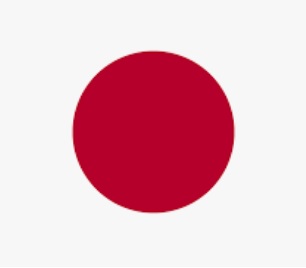Optimal RRSP Portfolio

Canada has a well-designed retirement policy for individuals: the RRSP (Registered Retirement Savings Plan). An RRSP allows you to save up 18% of your income, deduct it from this year’s taxes, and then have it taxed when withdrawn. There are various guidelines on withdrawals, but compared to other jurisdictions, withdrawal rules are relatively lenient and generally allow you to withdraw if you run into a financial squeeze before retirement.
RRSPs have spawned an incredibly successful industry, with over $775BN invested as of 2011.1)CBC News compiled statistics related to RRSPs in January of 2013: Retirement savings in Canada- by the numbers. Accessed November 30, 2014. But we think there is a fundamental flaw: we know from finance theory that basically all investors should have the same efficient (or optimal”) portfolio, with different risk tolerances expressing themselves through the leverage levels the individuals choose. But the RRSP program requires the average person to make these portfolio choices themselves. The result, in countless cases, is a random collection of RRSP assets purchased at the last minute (a GIC from a bank, some index funds with a discount broker, some shares of a hot mining tip from your cousin) that have a major impact on retirement income and, of course, on flourishing.
Very few of us are doctors or investment professionals. We don’t require a patient to choose their own prescription medicine – why should we require people to make their own investment choices, particularly as portfolio theory tells us we all should have the same portfolio? It would be much more efficient if individuals were simply provided with the efficient portfolio and did not have to spend time thinking about it.
So, with apologies to those in the investment industry (which will shrink when this policy is adopted), here is our suggestion:
• Create a threshold RRSP amount below which it would be invested by a Government-sponsored entity in an appropriate chosen market portfolio. The only input from the individual would be the risk tolerance (with default = low).
• The thresholds would be this order of magnitude:
→ 20-29 years old: $100,000
→ 30-39 year old: $200,000
→ 35-39 years old: $300,000
→ 40-49: $400,000
→ 50-59: $500,000
• The entity would charge no fees (it would basically be using index funds, and so a very low cost of operations, borne by the Government), and the Government would provide an extra 50bps bonus to encourage savings.
• Above these thresholds, the individual would be perfectly entitled to choose their own investments, although they would not have to. The 50bps bonus would not apply to the amount above the threshold.
• To manage this, everyone would have a direct account with a Government entity (this should also be extended for managing taxes and other government payments or receipts as well as the mechanism for automatic income smoothing that we recommend).
• RRSP investments sitting outside of the government scheme would be recorded in a wrapper account that shows the individual’s total holdings, returns, and contributions for all accounts in the same place.
Some might argue that the government could not do this. In fact, in Canada we already have excellent examples of excellent stewardship from the CPP and we would expect no less from this new body.2)The CPP Investment Board provides this stewardship. It publishes quarterly reports that are transparent and show all the details of funds under management. CPP Investment Board Website with Quarterly Reports. Accessed November 30, 2014. The net result of this policy would be:
• Higher risk-adjusted returns for pensions, so a dramatic increase in flourishing.
• A much simplified investment/pension choice for those people (most of us) who do not want have to manage their own investments.
• A much more efficient investment sector. Of course, the investment sector would shrink massively. But these are bright people and I am pretty sure they would find productive ways to use their time.
Photo: Mike Hewitt. Muskoka, Canada. Flickr Creative Commons License.
Footnotes
| 1. | ↑ | CBC News compiled statistics related to RRSPs in January of 2013: Retirement savings in Canada- by the numbers. Accessed November 30, 2014. |
| 2. | ↑ | The CPP Investment Board provides this stewardship. It publishes quarterly reports that are transparent and show all the details of funds under management. CPP Investment Board Website with Quarterly Reports. Accessed November 30, 2014. |




 Beyond GDP: Lessons for Redefining Progress in Canadian Food System Policy
Beyond GDP: Lessons for Redefining Progress in Canadian Food System Policy The Toxicity of a Hyper-Competitive Work Environment
The Toxicity of a Hyper-Competitive Work Environment Universal basic income can be the worst of all worlds - but ‘free money’ schemes do work
Universal basic income can be the worst of all worlds - but ‘free money’ schemes do work Correcting Capitalism: Changing Metrics and Meanings of Work among Japanese Employees
Correcting Capitalism: Changing Metrics and Meanings of Work among Japanese Employees Loneliness During the Covid-19 Pandemic
Loneliness During the Covid-19 Pandemic